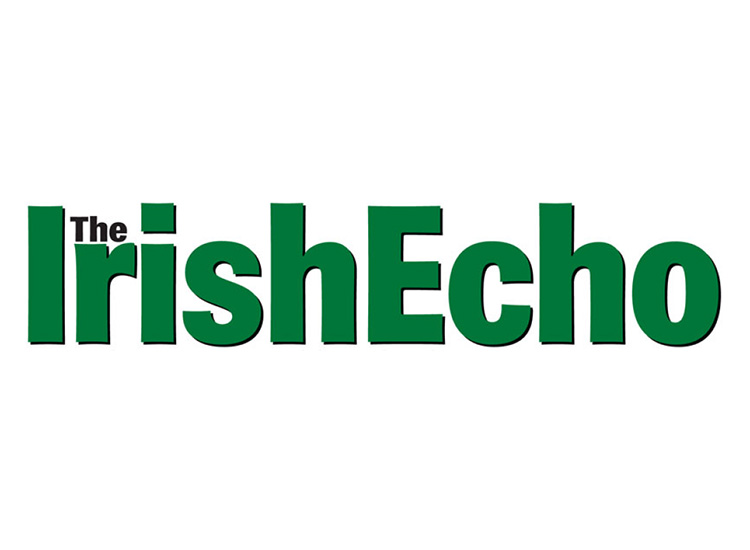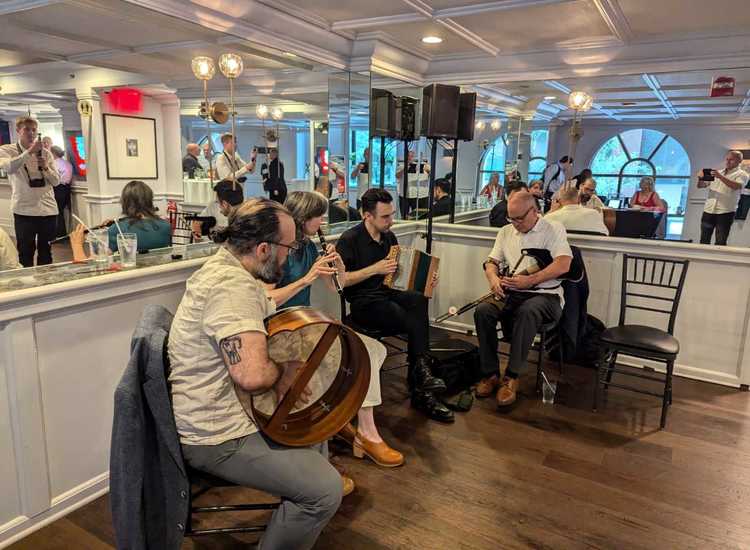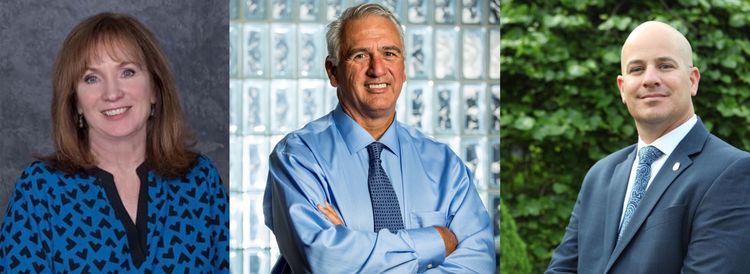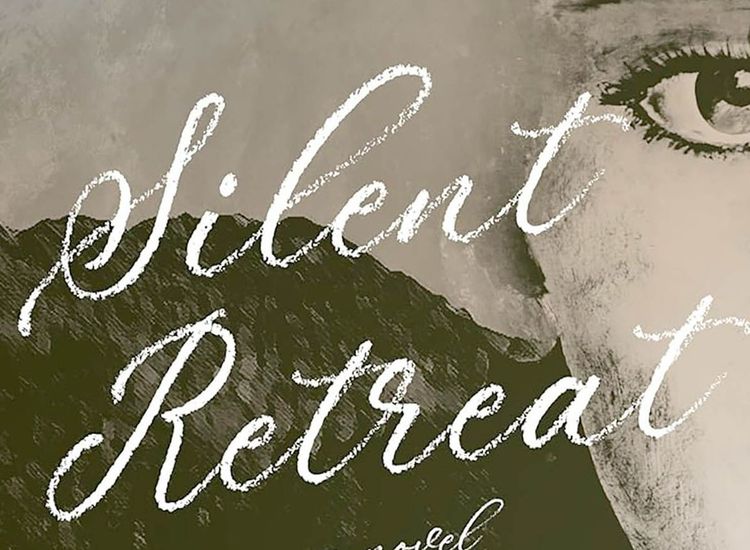By Daniel Neely
Folks who have been engaged with Irish traditional music over the last four decades or so will be well acquainted with the name Carl Hession, and for good reason. As a pianist and orchestral arranger he has a sterling track record, as he’s played with some of the greatest musicians out there. He’s also a prominent composer, and to this end, together with Francis Cunningham (concertina) and Eimear Coughlan (harp), he’s recently recorded a selection of his own work. The recordings have been released in two different ways: in book form as “The Tunes of Carl Hession” (the book comes with the CD); and as a more conventionally-packaged CD under the title “Úruna” (meaning “fresh” or “brand new”). The compositions and their expression are beautiful and engaging, and they provide crisp insight into Hession’s creative genius.
The two products “do” different things. The “Úruna” package includes a short forward from Kevin Crawford and little else, besides bare-bones information about the production and those on it. The book, however, includes the CD, photographs, biographical reflections, music notation (in standard and ABC form), and commentary for all the tunes contained therein. It also includes a section titled “Reels for Piano,” which lists groups of his compositions played only on piano, with directions to listen to them at his YouTube channel (tinyurl.com/CarlHessionYouTube). It gives listeners a much more comprehensive understanding of Hession’s career and a more nuanced understanding of his music.
For those who might not be totally familiar with Hession’s biography, one is provided by the man himself and it notes many of the incredible moments in his musical life. For example, he writes casually about encounters with Willie Clancy, Seamus Ennis, John Kelly, and others at his home growing up, about being in a céilí band with Matt Molloy, and about winning the All-Ireland trios competition in 1966 with Joe Burke and Kathleen Collins.
The story then takes him to UCC, where he studied with Aloys Fleischmann and Mícheál Ó Súilleabháin, and his subsequent gig teaching music in Coláiste Iognáid, a Jesuit secondary school in Galway, where he was rooted for 35 years. This was the beginning of a more involved musical career. He released a few albums (including “The Galway Suite”) in the 1980s, but it was the 1990s when things really began to take off. It was then that he recorded with the great Stéphane Grappelli and joined the seminal band Moving Cloud (with Manus McGuire, Maeve Donnelly, Paul Brock, and Kevin Crawford), made another of his own records, recorded with the legendary Joe Derrane, and wrote the music for the show “Rhythm of the Dance.”
More recently, he again worked musicians like Crawford and Derrane, but also with Mairtin O’Connor and Frankie Gavin, the latter with whom he continues to work with great regularity. (In fact, Hession and Gavin are currently working on an orchestral work that will be premiered by the Monaco Philharmonic Orchestra St. Patrick’s Day 2020.)
Hession’s compositional approach here matches the diversity of his experience. As I listen, I hear elements that remind me of composers like Seán Ó Riada and Niall Vallely. There are also facets that remind me a bit of Mícheál Ó Súilleabháin’s work. The album includes a number of fairly straightforward tune sets that would fit in nicely in any session (and many selections from them have, indeed, been recorded). I think of tunes in sets like “Sporting Galway / …,” “Blackrock Tower / …,” “Rambles of Mike / …,” and “Farewell to Jim.” (I should also note his march “Down the Hill to Carlow,” because you don’t really hear that many nice, new marches these days.)
There are also tracks that suit a more classical taste, like “A Granddaughter’s Dream” (which was written for Manus Maguire), “Trip to Letterkenny” (written for the NUIG Medical Orchestra), “Celtic Storm” (which was eventually performed by the NUIG Orchestra), and the absolutely stunning slow air “Inishbofen,” which, is given a treatment that makes it feel as if a Turlough Carolan composition.
Cunningham and Coughlan make for an excellent cohort. Both are from Clare and are longtime musical partners, steeped in the music (Coughlan’s grandfather was Paddy Canny; Cunningham great up learning from the Kilfenora Céilí Band’s Tim Collins) and have a fine track record of success in Fleadh competition and seem to have a strong feeling for how Hession’s music ought to be played. The album’s guest musicians Bogden Sofei (violin), Jim Higgins (percussion), and Sharon Howley (cello) are noteworthy in their limited roles here as well.
“The Tunes of Carl Hession” and “Úruna” make a fine retrospective on Hession’s compositional output. The music on the CDs itself is quite lovely, and the book the best companion for understanding more about the composer and his path to today. Definitely one to check out, especially if you’re a musician looking for something interesting and new. For more information, and to purchase, visit urnua.bandcamp.com.









